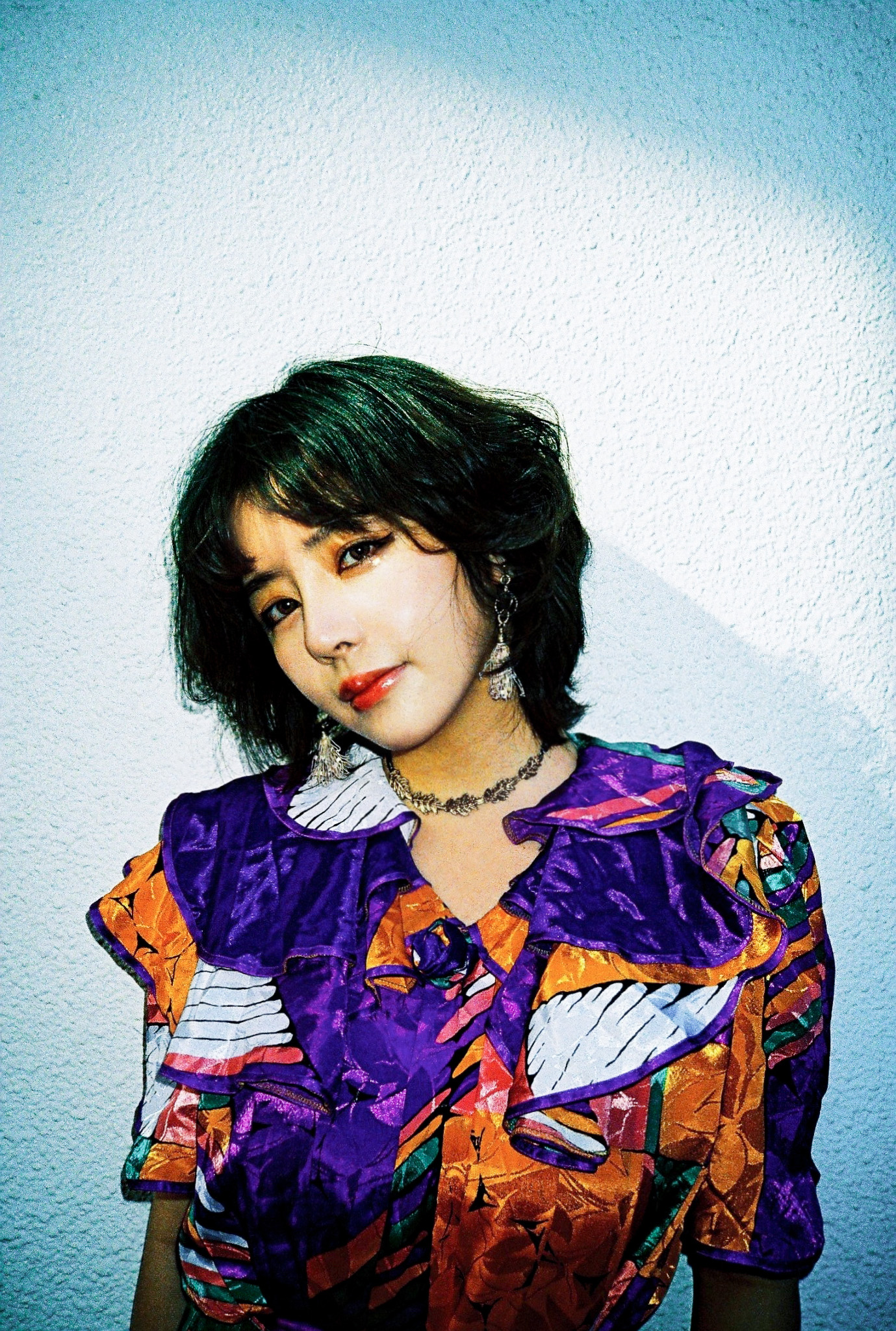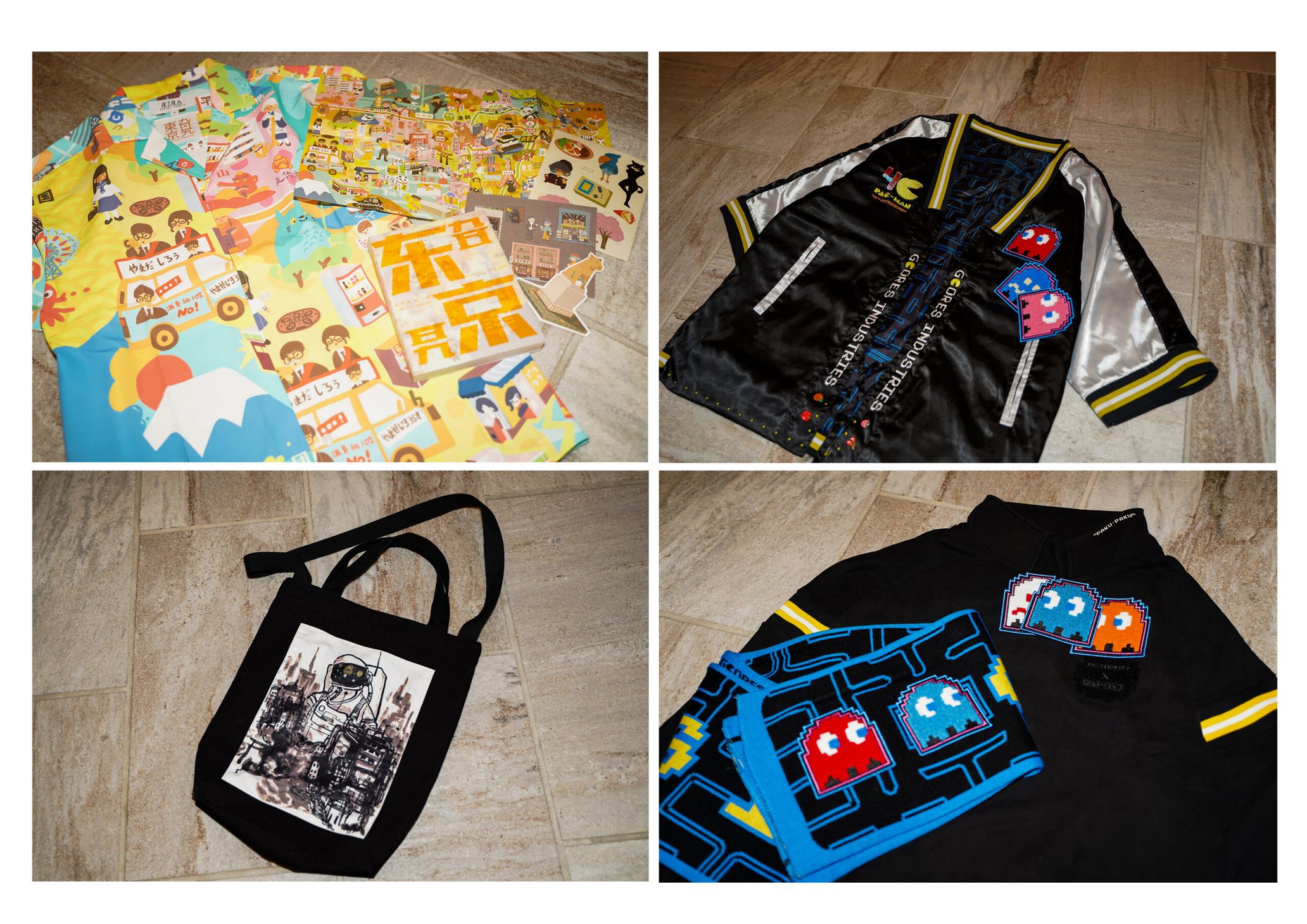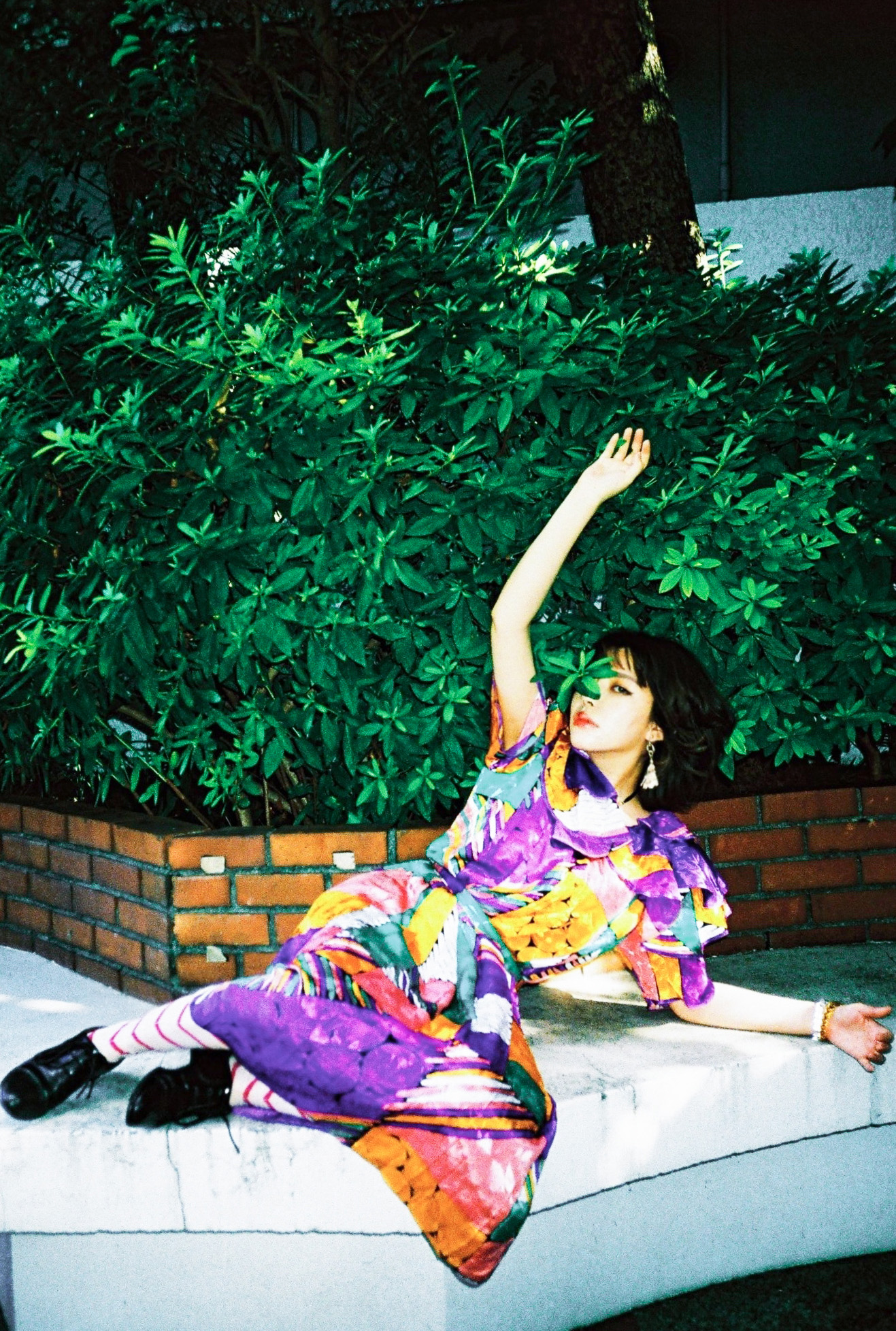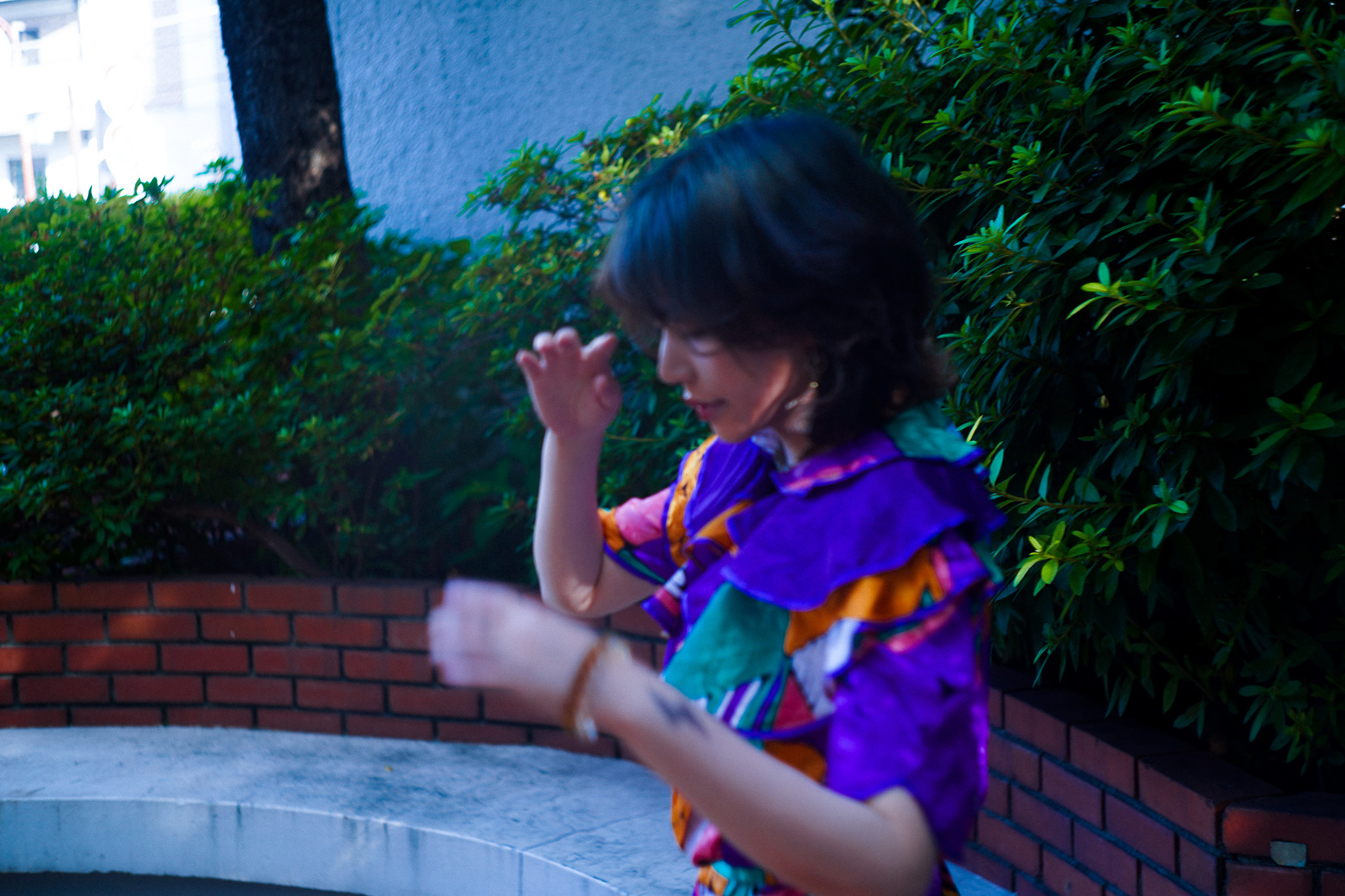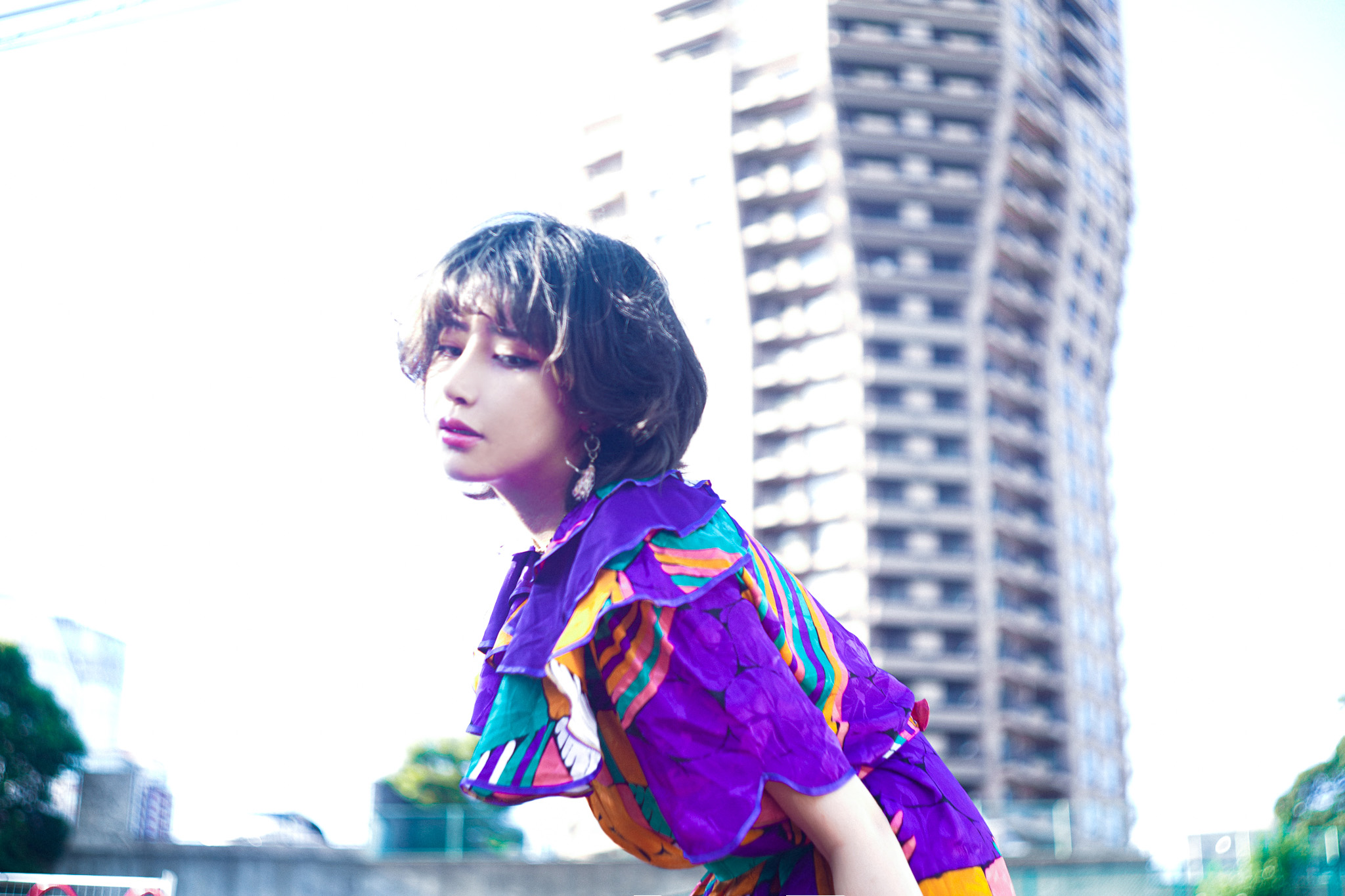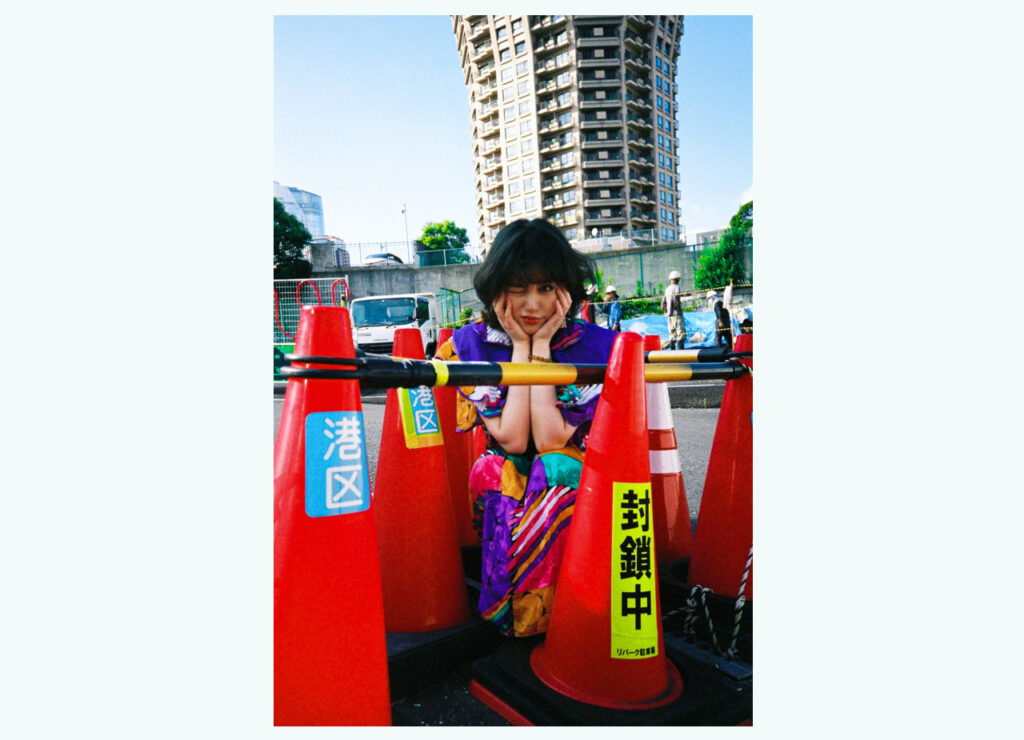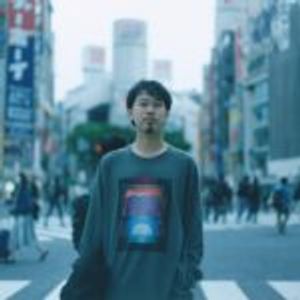Today, Asian music is amassing attention thanks to world-renowned groups like Black Pink and BTS. However, a music unit with a completely different aesthetic from idol groups is also gaining global attention today.
DiAN is a Beijing and Tokyo-based trio comprised of Seidenba Saku, a multitalented pop artist, singer-songwriter, writer, designer, director, producer A-bee, and composer immi.
Many influential media outlets have written about DiAN because they were featured on “PAC-TIVE,” the new 2021 theme song for PAC-MAN produced by Yaeji, the Korean-American electronic producer, DJ, and vocalist.
We spoke to Seidenba Saku, the face, vocalist, and art director of DiAN, about her appeal and the music scene in Asia.
Being free without being pigeonholed, and the joy of creating
ーーCould you first introduce yourself?
Seidenba Saku: I’m Seidenba Saku from Beijing. I work on many creative things like making music as DiAN, a music unit A-bee, a producer, immi, a composer, and I started in 2019. I’m also a graphic designer, art director, writer, and director.
ーーWhat’s the concept behind DiAN?
Seidenba Saku: We make music based on the concept of “Every human being understands the world through stories.” I’m in charge of writing lyrics. I create a story by [listening to] the track or melody, then write the words. For instance, when I wrote “Moonbow Disco,” I pictured Peter Pan’s Neverland and wondered what kind of universe would exist beyond a bridge made of a moonbow, which is like a rainbow created by the moonlight. I thought, “In Neverland, a big disco ball-like moon would be floating, and this type of music would be playing.” I wrote the story for “眼花 – yǎnhuā” based on the theory that a goldfish’s memory lasts for seven seconds, which is a short memory. It’s a sad story about a goldfish and a person’s bond as they go on an adventure; it’s about what sort of relationship might be formed in [the goldfish’s] overwritten memories. On the surface, our songs may seem like strange stories, but I use my lyrics to express universal thoughts and things everyone thinks about through my interpretation from a different perspective. And we sublimate that to the track.
DiAN- “Moonbow Disco”
DiAN- “花 – yǎnhuā”
ーーWhere do your musical roots come from?
Seidenba Saku: I’ve been listening to pop music in Chinese and English since childhood. I discovered Japanese music for the first time at the Japan Music Information Center in Beijing. They would play Japanese music videos and sell CDs and DVDs, and you could learn about live shows and what current music was popular in Japan. I listened to a lot of Japanese music there.
ーーWhich artists did you listen to?
Seidenba Saku: I first started liking L’Arc-en-Ciel. This young woman who lived next door was a fan of L’Arc-en-Ciel, and I watched so many music videos by them thanks to her. Aside from them, I listened to Ringo Sheena and mainstream Japanese music a lot. Back then, no one around me shared my taste in music, so I would connect and share information with people with similar tastes online on BBS. I started studying Japanese using Japanese music and music magazines around then.
ーーI feel like your music is a combination of 80s Japanese pop music and electronic music. How did this style of yours come about?
Seidenba Saku: I was in a band in high school, and I started listening to various kinds of music around that time. I would choose which CDs to listen to at the Japan Music Information Center according to the album cover. And I naturally began listening to 70s and 80s Japanese music like Jun Togawa. Once I got into university, aside from the Japan Music Information Center and BBS, I started sharing music on the school’s online network. That’s when I came across electronic music.
ーーHow has Japanese music influenced you?
Seidenba Saku: The grammar and how [Japanese people] use words in their lyrics influenced me greatly. I can tell right away when someone’s music is Japan-inspired. Japan has a distinct way of writing melodies and using the minor scale. But I do think China and Japan are similar. When I listen to kayokyoku, the language is different, but I often feel a sense of nostalgia.
ーーBesides your music, it seems like traditional Japanese pop music influences your cover art, outfits, and Instagram. What’s your source of inspiration regarding visuals?
Seidenba Saku: As a child, I lived in countries aside from China like America, and those in West Asia, Europe, and Africa. I’ve encountered cultures differing from China. Maybe my experiences are stored in the corners of my brain, and they influence me subconsciously. Of course, Japanese pop music, films, TV shows, mangas, and novels inspire me too. However, when I come up with my work, I don’t look for references or watch a lot of stuff. Most of the time, I intuitively write about the things in my head. When I brainstorm the album cover, I start by creating a mood board compiled of my ideas. When I think about the outfits or the setting of the characters, I sketch them out.
ーーI’d like to hear about your work outside of music.
Seidenba Saku: As a pop artist, I have exhibitions in Japan and China. I also showcase my characters to the world and publish books. Moreover, as an art director, I worked on the Chinese video campaign for New Balance. I also sell clothes by collaborating with fashion brands.
ーーHave you been illustrating longer than you’ve been making music?
Seidenba Saku: I’ve been drawing and studying music since I was five or six years old. I had keyboard and singing lessons every Saturday and went to an art school every Sunday. Once I started elementary school, I studied drawing on the weekend. Because my major in university was in animation, I might’ve been drawing more [than singing]. Once I started middle school, I was in a band with a friend, and we played songs we genuinely liked. We mostly played niche songs. At the time, I couldn’t even imagine that my career would be in music.
ーーIn China, are you seen as a musician or a pop artist?
Seidenba Saku: To be honest, I don’t know. I want to manifest my thoughts (imagination) right away without being categorized by labels or genres, so there’s no need to limit my means of expression. I hope to continue optimally expressing myself, whether that’s making music, drawing, or filmmaking.
ーーWhy is that?
Seidenba Saku: I like creating things. I get excited when I do; for me, it’s the moment that makes me feel the joy of living.
The shift away from Eurocentric music and the imminent birth of great Asian music
ーーYou’re based in more than one place, yes?
Seidenba Saku: Yes. I’m based in Tokyo, the city of challenging oneself and where I lived on my own for the first time, and Beijing. I’ve gotten used to going back and forth.
ーーAre there any differences between the music and art scene that you can discern because you’re based in both places?
Seidenba Saku: When I was a child, I thought the two countries were completely different worlds, but now I feel like there aren’t that many differences.
ーーWhat about art?
Seidenba Saku: I think there’s a difference between traditional art, such as distinct Chinese and Japanese drawing styles. But I feel like the distinction between these is decreasing recently. This is due to the internet and social media. There’s no time difference regarding who or when someone releases their work. The “this art belongs to this country” ideology is going away.
ーーThe global music industry is changing because of covid. What about China?
Seidenba Saku: At first, people couldn’t host live shows or music festivals, and I strongly felt everyone’s desire to listen to live music. When music festivals were unbanned this year, there was so much passion. People who like music had always been going to festivals. But now, those in China who weren’t that interested in live shows or festivals attend live shows too.
ーーPerhaps the same could be said about Japan.
Seidenba Saku: Right. When I ask, “Why do you want to go to music festivals?” many people say, “I want to connect with people. I want to have fun with friends.” Music creates one of the reasons and catalysts for people to connect with others.
ーーHas anything changed for you because of covid?
Seidenba Saku: Just when the pandemic started getting serious, I had a show in Daikanyama. It was around March. After that, there was a prolonged period where I couldn’t go back to Beijing. I made a song with someone in Beijing, long distance. We recorded our separate verses and didn’t make our recorded voices cohesive. Also, I partook in PAC-MAN’s 40th-anniversary project. I covered “PAC-MAN Fever” by Buckner & Garcia and made “饕餮 TAOTIE feat. 小老虎 (J-Fever).” Maybe I was able to focus on creating.
DiAN- “饕餮 TAOTIE feat. 小老虎 (J-Fever)”
Aside from that, I started playing Animal Crossing. My artist friends had started playing it too. Lockdown in China was stricter than in Japan, and no one could go outside. So, I got together with everyone through the game, performed, and made music on my island.
ーーHow do you think the music scene in Asia will change?
Seidenba Saku: Until now, American music was at the center, and popular songs were based on the west. I guess you could say people considered making songs in that style was closer to perfection. But music should be free. There’s no need for there to be standards like Hollywood movies. As of late, a lot of brilliant music is being born in different Asian countries. Good music is being made in Thailand, Vietnam, Indonesia, and such. It feels like Asian music is starting to change. It’s like so much amazing music is being born.
ーーYou recently released a new song. Could you talk about that?
Seidenba Saku: It’s a song called “Electric Dreams -电子白日梦-” and it’s about how people imagined the future would be like in the 80s and 90s. It’s a story about AI, but not like Siri today. It’s more like the analog-ish computer AI that people wrote about at the time. That AI becomes conscious and gives romantic advice to a human protagonist, but it develops feelings for the woman. We’re now used to using social media every day. It’s as if we’re living in a cyberpunk world (a virtual world inside a computer). There might come a time when we can no longer distinguish between AI and humans. How will the reality of the virtual world era be like? What will the relationship between the real self and the social media (virtual world) self be like? Will the relationship between the self and others change according to the times? Will we continue to question our identity and our relationship with others in reality and the virtual world? Such thoughts make up one part of “Electric Dreams.” It would make me happy if everyone could use their imagination to enjoy the song.
DiAN- “Electric Dreams -电子白日梦-”
ーーLastly, what sort of artist do you strive to be in the future?
Seidenba Saku: I want to be a 100% Seidenba Saku, more so than now. I’ve received so much influence from different things, but I want to encounter more cultures and people and evolve as an artist. I want to continue looking for my tao (path) and make music and drawings that anyone could instantly recognize. I want to be an artist that could express themselves 100%.
Seidenba Saku
Seidenba Saku is the face, vocalist, and art director of DiAN, a music unit. She’s a multifaceted pop artist, singer-songwriter, writer, designer, and director. Born in Beijing, Seidenba Saku was influenced by distinct cultures in America, Europe, West Asia, and Africa. After graduating from the Communication University of China, the most prestigious institution of broadcasting and media in the country, she moved to Tokyo. Starting with design and film, she works on various mediums.
Instagram: @diansaku
Twitter: @DiAN__official
Facebook: @OfficialDiAN
YouTube: DiAN Official Channel
Photography: Takao Okubo
Transration Lena-Grace Suda

